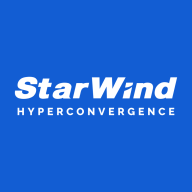


StarWind Storage Appliance and Pavilion HyperParallel Flash Array compete in the high-performance storage solutions category. Pavilion HyperParallel Flash Array has an upper hand with its advanced performance features while StarWind Storage Appliance is favored for its cost and support structure.
Features: StarWind Storage Appliance provides robust and valuable features including high-availability clustering, data deduplication, and efficient resource management. Pavilion HyperParallel Flash Array excels with superior IOPS capabilities, low latency, and scalable architecture. Users highlight that Pavilion’s advanced performance features give it an edge.
Room for Improvement: StarWind Storage Appliance could improve in areas such as expanding protocol support and enhancing integration capabilities with third-party tools. Pavilion HyperParallel Flash Array, users suggest, needs better documentation and more straightforward management practices. Both products have room for enhancement, but Pavilion's documentation and management complexities are noted as more pressing.
Ease of Deployment and Customer Service: StarWind Storage Appliance is praised for its user-friendly deployment process and responsive customer support. Pavilion HyperParallel Flash Array, while noted for its deployment flexibility, faces criticism for a steeper learning curve and slower support response times. StarWind’s ease of deployment combined with superior customer service makes it preferable for users seeking a seamless setup experience.
Pricing and ROI: StarWind Storage Appliance is regarded as a cost-effective solution with favorable ROI due to its lower initial setup costs and efficient performance. Pavilion HyperParallel Flash Array, although more expensive, is seen as providing good ROI through its high performance and durability. Nonetheless, StarWind’s competitive pricing and good ROI make it appealing to cost-conscious buyers.
| Product | Market Share (%) |
|---|---|
| Pure FlashArray X NVMe | 1.0% |
| StarWind Storage Appliance | 0.2% |
| Pavilion HyperParallel Flash Array | 0.3% |
| Other | 98.5% |


| Company Size | Count |
|---|---|
| Small Business | 15 |
| Midsize Enterprise | 11 |
| Large Enterprise | 12 |
| Company Size | Count |
|---|---|
| Small Business | 5 |
| Midsize Enterprise | 3 |
| Large Enterprise | 2 |
Pure Storage FlashArray//X is the world’s first enterprise-class, all-NVMe flash storage array. It represents a new class of storage – shared accelerated storage, which is a term coined by Gartner – that delivers major breakthroughs in performance, simplicity, and consolidation.
Pavilion HyperParallel Data Platform
The Pavilion HyperParallel Data Platform™ dramatically accelerates what organizations achieve by delivering universally unmatched storage performance, in an incredibly compact solution while reducing data center costs and complexity. Unrivaled flexibility for multiple data types and protocols, along with broad ecosystem integration, ensure that every customer has choice and control.
What is the Pavilion HyperParallel Data Platform
The Pavilion HyperParallel Data Platform is comprised of the Pavilion HyperParallel Flash Array™ and Pavilion HyperOS™. The Pavilion HyperParallel Flash Array leverages a unique, switch-based architecture to create a multi-controller solution that delivers an unmatched combination of high performance, ultra-low latency, and storage density. Pavilion HyperOS is a powerful, purpose-built storage operating system designed to unlock the power of the multi-controller Pavilion HyperParallel Flash Array, which delivers scalability and flexibility that no other solution can offer.
Pavilion HyperParallel Data Platform Data Sheet
Download the Pavilion HyperParallel Data Platform data sheet. Updated: December 2020
For SMB and Enterprises who are looking for high performance primary storage for server virtualization, VDI, database and Big Data scenarios, or inexpensive secondary backup tier, our solution is StarWind Storage Appliance. It unifies commodity servers, disks and flash, and associated software into an easily scalable storage platform.
Additionally, the appliance features an optional gateway to Azure public cloud, which helps to implement an effective Disaster Recovery plan or meet regulatory requirements. StarWind SA scales up by adding individual disks and flash modules, or JBODs, while adding ready controller nodes allows scaling out.
StarWind SA targets those, who need high-performance primary storage or secondary storage for backup. In case there is a whole virtualization infrastructure to build from scratch, StarWind HCA will come in handy. Otherwise, if all the required hardware is present, StarWind Virtual SAN will be enough to build a high-performance virtualization setup.
We monitor all All-Flash Storage reviews to prevent fraudulent reviews and keep review quality high. We do not post reviews by company employees or direct competitors. We validate each review for authenticity via cross-reference with LinkedIn, and personal follow-up with the reviewer when necessary.